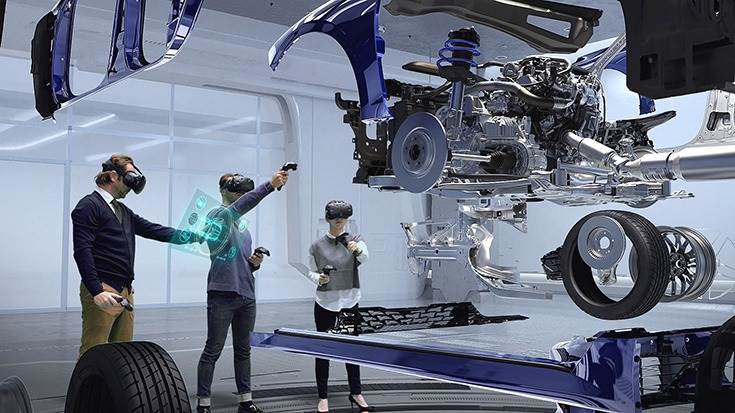
Hyundai and Kia have revealed a new virtual reality (VR) design evaluation system at the brands’ global design headquarters. The new system, introduced at the Namyang R&D Center in South Korea, demonstrates a heightened focus on enhancing vehicle development processes through the implementation of VR technology.
The technology uses several development applications, enabling teams of designers and engineers to carry out vehicle design quality assessments and development verification processes. The system also uses three-dimensional Computer Aided Design Technology that is meant to provide greater accuracy of the virtual models.
VR headsets allow the brands’ vehicle designers and engineers to virtually enter developmental simulations – with 36 motion-tracking sensors detecting and tracking the locations and movement of all users – enabling each to participate accurately, in real time. The new VR design evaluation system can currently support up to 20 simultaneous users, enabling greater cross-team collaboration than ever before.
As a result, the new cutting-edge facility allows the designers from each brand to more efficiently review a multitude of design concepts earlier in the developmental process and in ways that were previously physically impossible. The system simulates interior and exterior design elements, lighting, colours and materials, along with allowing users to simulate operations of various components such as doors, boot-lid, mirrors, etc.
The technology is part of a KRW 15 billion (US $12.8 million) investment in the Namyang Research and Development Center announced by Hyundai and Kia in March 2019. Through the complete implementation of the virtual development processes throughout the R&D and pre-production stages, the Korean companies anticipate a 20 percent reduction in vehicle development times and a 15 percent reduction in annual development costs. In addition to this, these new virtual technologies are expected to increase profitability and trigger a cycle of continuously increasing R&D investment for Hyundai and Kia.
Both brands are set to expand the use of VR technologies to manufacturing, design and product planning processes, along with using the tech to enable real-time collaboration with its design centres across multiple countries, including India.
“The virtual development process is a necessary step for responding quickly and reacting with agility to the needs of customers and paradigm shifts within the automotive industry,” said Albert Biermann, Head of Research and Development Division for Hyundai Motor Group. “Through reinforced virtual processes, we will enhance quality and profitability, ultimately increasing investment in R&D to secure competitiveness in future mobility.”
Hyundai has already made use of the technology with the finished product being the HDC-6 Neptune Concept truck that was revealed at a commercial vehicle show in North America earlier this year.
Also see:
Hyundai Aura official sketches revealed
India-bound Kia Carnival to get three seating configurations
from Autocar India https://ift.tt/35weI8E
via IFTTT

No comments:
Post a Comment